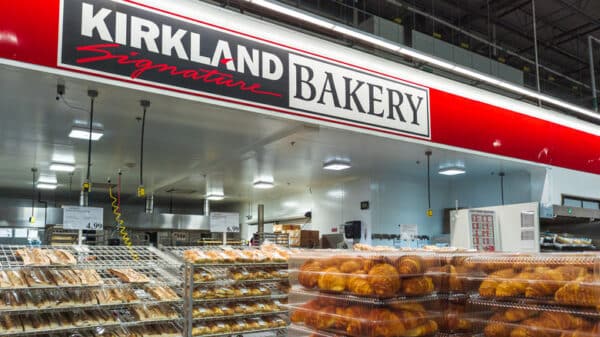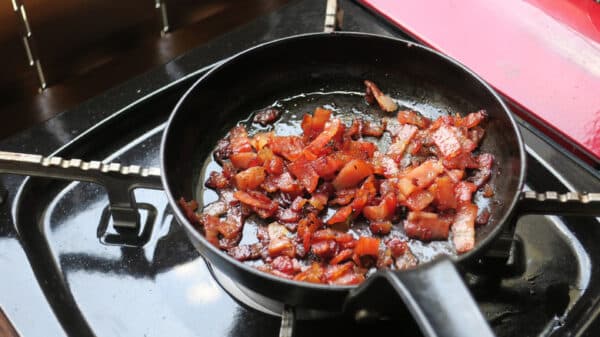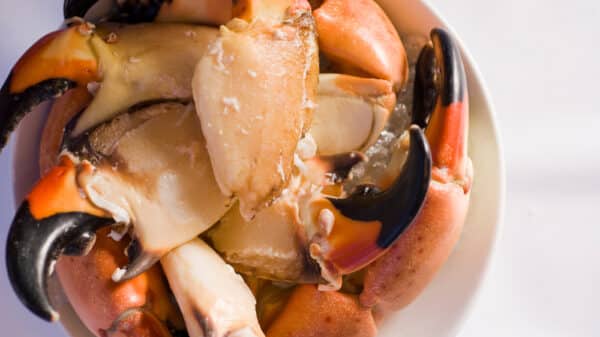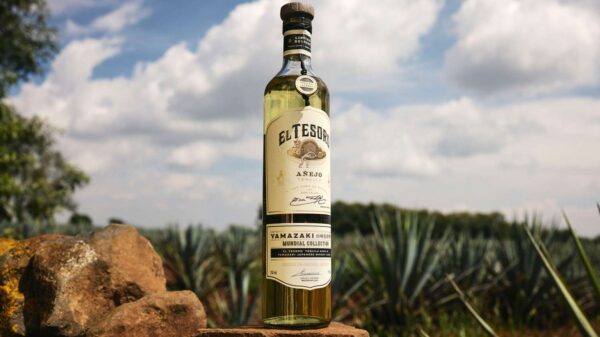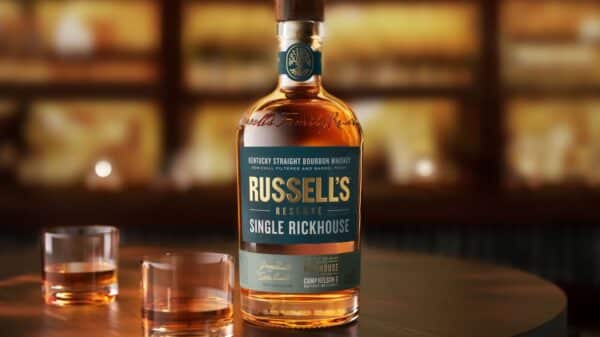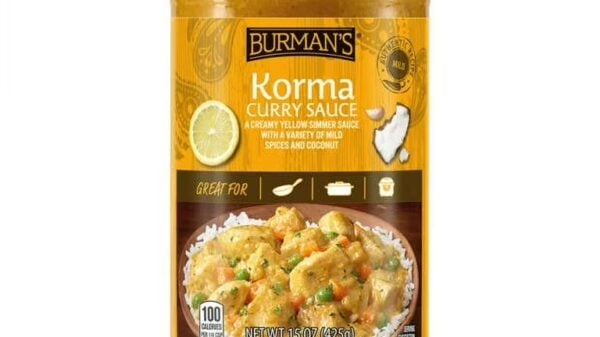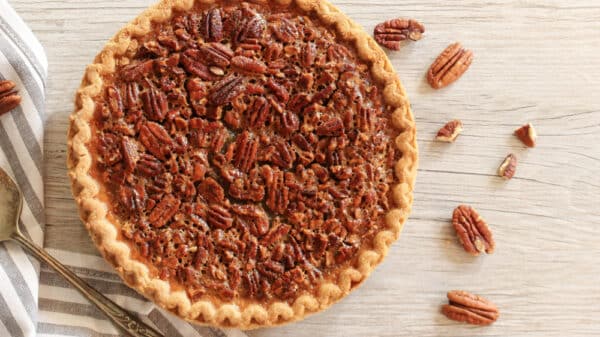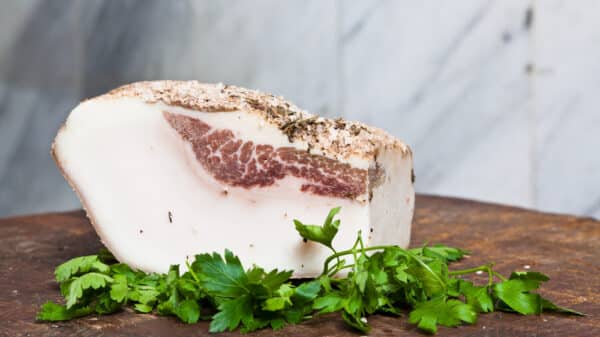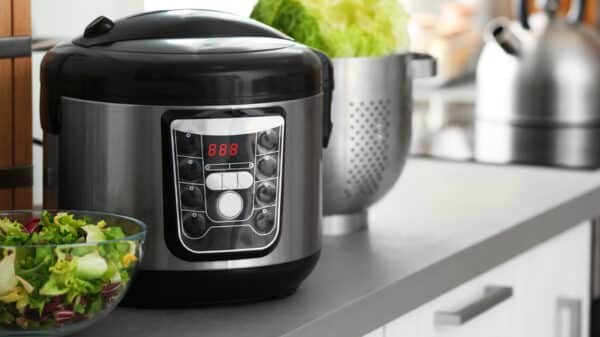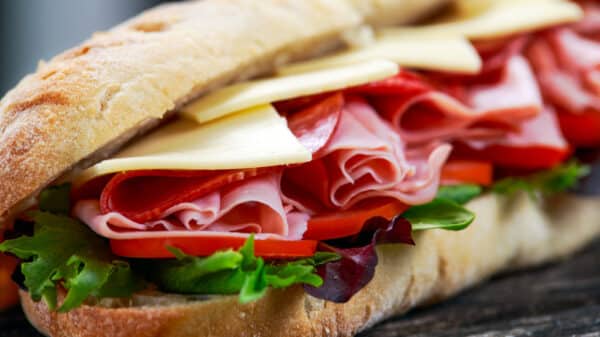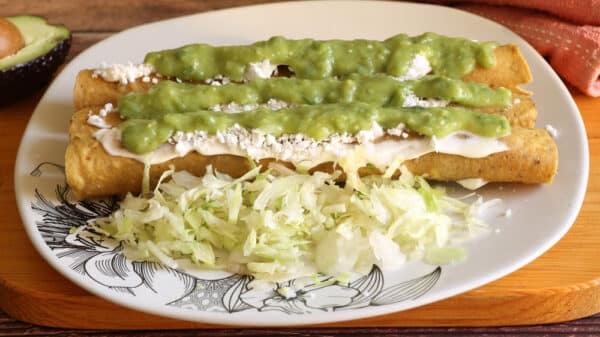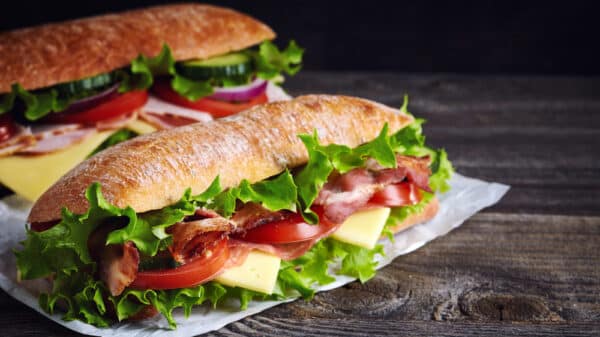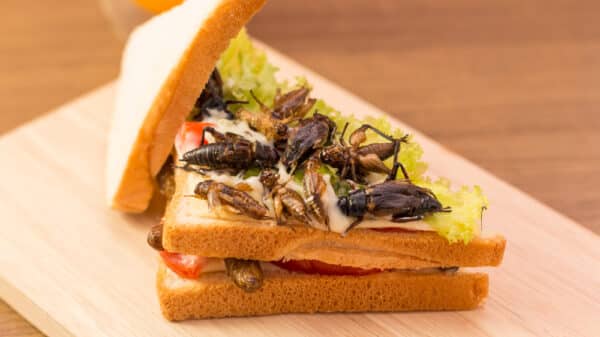Canned foods have been a part of American life since the 1800s, and they’ve certainly earned their place as a pantry essential. By the end of the 19th century, the popularity of canned items began to surge, giving rise to various foods and flavors that would capture the hearts and kitchens of generations. While you might think of canned fish, soup, or veggies as timeless staples, the reality is that the canned food landscape shifts depending on the decade and changing consumer needs.
Throughout the 20th century, shelf-stable foods became crucial, especially as more households sought convenience in the form of ready-to-eat meals. The beauty of canning transformed how we preserved foods, allowing everything from fresh produce to meats and even dairy products to last longer and travel further. With the introduction of innovations like canned pasta and stews, mealtime became simpler—just heat and eat!
However, not every canned food trend has lasted through the ages. It’s interesting to note how even the canning industry has gone through cycles of what’s in vogue. Some canned products that once flew off the shelves have faded into obscurity, while others have retained their status as beloved staples. The entrepreneurial spirit of innovators from past decades brought forth a wave of novelty beverages in cans during the millennial era; some became household staples, while others quickly vanished. Join me as we delve into a decade-by-decade exploration of the most popular canned foods and beverages over the last 135 years.
1890s: Baked Beans
Let’s start with baked beans, a staple that’s practically the godfather of canned goods. This dish, rooted in Indigenous American culture from the Northeast, evolved into the canned version we know today. The canning of beans began in the 1860s, but it was Heinz who took the trend to the next level by commercially canning baked beans in 1895. Interestingly, Henry Heinz introduced these beans to a luxury store in London nine years earlier, which sparked the British love affair with baked beans.
Heinz wasn’t alone in the market; Van Camp’s also made waves with their pork and beans—canned in a rich tomato sauce that deviated from the New England-style molasses recipes. Their aggressive marketing tactics starting in 1890 helped catapult their canned beans into millions of homes and led to the establishment of several manufacturing facilities. Today, both Heinz baked beans and Van Camp’s pork and beans are still beloved by many, proving that some trends are hard to shake.
1900s: Canned Corn and Peas
Moving into the early 20th century, we meet another icon: the Jolly Green Giant. Canned vegetables, particularly corn and peas, gained immense popularity thanks to the Minnesota Valley Canning Company, what we now know as the Green Giant Company. Founded in 1903, the company struggled early on but found its rhythm by focusing on cream-style corn and canned peas by 1907.
It wasn’t until the emergence of the Green Giant brand in 1925—complete with its cheerful mascot in 1936—that the company solidified its place in the canned goods market. The appeal of freshness and quality associated with the Green Giant allowed these vegetables to thrive on grocery store shelves for decades, and they remain a staple in many kitchens today.
Each decade brings a mix of nostalgia and culinary evolution in the world of canned foods. Whether you’re enjoying a family meal with baked beans or incorporating canned corn into your favorite recipes, it’s fascinating to think about how these items have journeyed through time to still be part of our lives.In the 1910s, canned shrimp was nothing short of a culinary revelation. Although you might find that hard to believe while strolling through today’s grocery aisles—where fresh or frozen shrimp reign supreme—this convenient option captured the hearts of American households a century ago. Back then, refrigeration was a luxury, and canned foods offered a practical solution for a nation longing for fresh flavors without the hassle of preservation.
Brands like Larkin were pioneers in making shrimp more accessible to the average consumer, eliminating the need for skillful cleaning and preparation. Recipes from this era often featured canned shrimp, showcasing its versatility in various dishes. To preserve the vibrant color of the shrimp, manufacturers took meticulous steps: they peeled, blanched, and trimmed the crustaceans, then lined cans with enamel or other materials to prevent discoloration. Most of the shrimp found in those cans were sourced from the rich waters of the Gulf, reflecting a burgeoning seafood industry. Even today, you might stumble upon Bumble Bee canned shrimp, a nostalgic nod to that culinary past, though the demand for fresh or frozen varieties now far surpasses its canned counterpart.
Fast forward to the 1920s, when canned pineapple burst onto the scene, igniting a wave of culinary creativity and sophistication. Once perceived as an exotic luxury, fresh pineapple was enough to intimidate anyone without a knack for slicing fruit. This is where the allure of canned pineapple shone bright. Back then, canned pineapple was exclusively reserved for the upper echelons of society, a status symbol accentuated by its scarcity and the labor-intensive nature of fresh fruit preparation.
Brands like Del Monte and Dole capitalized on the niche of canned pineapple thanks to their deep-rooted connections in Hawaii, where the fruit thrived. Hawaii would only gain statehood in 1959, making access to its tropical bounty even more special during the 1920s. These companies offered a practical solution, turning pineapple into a shelf-stable commodity that could grace the tables of families far removed from palm trees and sunny beaches. Among the iconic recipes that emerged was the now-classic Pineapple Upside-Down Cake, a dish that has stood the test of time and continues to be beloved across generations.
As we move into the 1930s, the backdrop of the Great Depression reshaped American food habits dramatically. Canned goods were a lifeline during this challenging period, and canned corned beef became a pantry staple for families struggling to stretch their meals. The era began with the stock market crash of 1929, a catastrophe that pushed many into financial hardship. Canned corned beef was not just accessible; it was a source of affordable protein when fresh options were scarce.
Known for its practicality, canned corned beef had already earned a reputation as a soldier’s meal during World War I before finding its way into American homes. The creativity that emerged from the canned meat movement was fascinating, leading to unique recipes like the infamous corned beef luncheon salad. Combining gelatin with a blend of canned peas, vinegar, lemon juice, and the star ingredient was a testament to resourcefulness. Heinz also contributed to this era with practical recipes that helped families adapt and make the most of their meager supplies.
The 1940s brought another turbulent chapter as America found itself embroiled in World War II. With rationing in full effect, canned foods became an essential part of the American diet. The appeal of one-can meals skyrocketed as people had to adjust their eating habits amidst wartime restrictions. While home canning was encouraged with produce from “victory gardens,” many chose the convenience of canned soups and stews instead.
Campbell’s condensed soups were immensely popular during this time, and Dinty Moore beef stew became a household name. Imagine comfort food conjuring up nostalgic memories of family dinners; that’s what Dinty Moore offered. This hearty blend of beef, carrots, and potatoes was not just a meal—it was a quick escape from the stresses of war and a way to bring warmth into homes during uncertain times.
By the time the 1950s rolled around, canned goods had entrenched themselves deeper into the fabric of American life, particularly in the realm of family and homemaking. The rise of suburbia saw an evolution in family dynamics, with many women assuming the role of the main grocery shoppers and meal preppers.
Canned fruit cocktail emerged as the epitome of convenience during this decade, offering a delightful blend of flavors that catered to the busy lifestyles of suburban women. Del Monte capitalized on this trend, positioning its fruit cocktail as a solution for those looking to add a splash of excitement and ease to their meals. This not only provided a hit of nostalgia for parents who remembered it fondly from their own childhood, but it also became a go-to item for a new generation trying to balance work, home, and family.
Each of these decades paints a vivid portrait of how canned foods transcended simple storage solutions. They reflected the ongoing rhythms of American life—adapting to the constraints of the time while becoming cherished staples that still resonate in kitchens across the country today.In the world of canned goods, the evolution of popular products reflects not just culinary trends but also changing lifestyles and consumer needs. One of the pioneers in this realm, known for its canned tropical fruits, was Golden Morn. This brand is often credited as the first to sell fruit cocktail, a delightful mix of fruits that caught the attention of consumers in the early 20th century. The concept of fruit cocktail began to take shape in 1930 when Herbert Gray from the Barron-Gray Packing Co. formulated what we recognize as fruit cocktail today. Del Monte jumped on board a few years later, selling its version since 1938, but it was during the 1950s that it really exploded in popularity.
Imagine those charming little cans packed with diced pears, juicy peaches, vibrant pineapple, and plump grapes, often topped with a maraschino cherry. They didn’t just make for a convenient snack; they opened the door to endless culinary possibilities. Recipes for Ambrosia salad and Jell-O salad became staples in many kitchens, celebrating the ease and sweetness of fruit cocktail. However, as the years passed, a shift occurred. Fresh fruits began to capture the spotlight, praised for their fresher taste and health benefits. In some respects, the canning craze took a backseat, leaving fruit cocktail a bit dusty on store shelves.
As we moved into the 1960s, another staple emerged: sweetened condensed milk. Though its origins date back to 1856, when the need arose to combat illnesses caused by contaminated fresh milk, it became a household name during the 1960s for entirely different reasons. The modern take on sweetened condensed milk provided a versatile ingredient for home baking and cooking. Picture it: thick, creamy, and sweet, this ingredient found its way into so many beloved recipes of the decade, from evaporated milk chocolate cake to indulgent desserts. Brands like Eagle and Carnation became household names, serving every home cook’s needs.
Fast forward to the 1970s, where something undeniably nostalgic emerged in the canned food aisle: canned pasta. Chef Boyardee, named after Ettore “Hector” Boiardi, an Italian immigrant who initially found success in Cleveland, flipped the script on pasta by canning it. During World War II, his innovative sauce made it into rations, proving that convenience could also be tasty. The iconic SpaghettiOs, invented in 1965, soon became a favorite, especially among children who relished the playful O-shaped noodles in tomato sauce. Canned pasta became a go-to for busy parents looking for quick meal options, despite later concerns about processed foods.
Then came the 1980s, a decade known for its colorful, convenient, and sometimes quirky food options. Enter Easy Cheese, a product that epitomized the ’80s snack culture. Although it was originally marketed as Snack Mate in the 1960s, it underwent a rebranding and became a cultural icon during the ’80s as Easy Cheese. It wasn’t just about convenience; it became part of social gatherings, as kids enthusiastically sprayed it on crackers or even directly into their mouths. The playful marketing campaigns underscored a carefree spirit, despite its heavily processed nature, ultimately contributing to its decline in health-conscious times, although you can still find it in stores today.
And as we approached the 1990s, the culinary landscape continued to transform with products that caught the eye (and taste buds) of a new generation. AriZona iced tea took the beverage scene by storm, offering large, colorful cans of iced tea priced under a dollar. Created in Brooklyn by Don Vultaggio in 1992, AriZona infused the market with options that were both refreshing and affordable, tapping into the busy lifestyle of the ’90s.
Each of these canned goods, from fruit cocktail to Easy Cheese, illustrates how food products can reflect our evolving needs and preferences. They are more than just items on a grocery shelf; they are snapshots of our culinary history, moments that connect families, and dishes that traverse generations. Whether they fill our pantries or spark nostalgia, these foods tell the story of who we were and who we are becoming in our meals and memories.AriZona Iced Tea has an interesting backstory that reflects both creative ambition and fierce competition. When it first hit the market, the co-founder, Ari Vultaggio, marketed his 24-ounce cans of iced tea for just 99 cents, setting the bar for affordable beverages. His passion for Southwestern decor influenced the branding, capturing a vibrant and colorful aesthetic that immediately drew attention. This innovative approach aimed to outsize and outprice the more established Snapple, and it worked. Within just three years, AriZona was selling a staggering 18 million cases. Its initial offerings included the classic lemon and raspberry flavors, but, as demand grew, the lineup expanded to include tantalizing options like peach and mango. In 1996, one of their most beloved flavors, Ginseng and Honey Iced Green Tea, was introduced—a drink that still holds a special place in fans’ hearts today.
However, AriZona’s journey almost hit a rocky detour in the late ’90s. Tensions rose between Vultaggio and his business partner, John Ferolito, who wanted to sell the company. It led to a lengthy legal battle that could have ended their dream. Fortunately, both came to a settlement, and today, AriZona continues to thrive. While the original can size has slightly decreased to 22 ounces, the price has impressively remained below a dollar—truly a testament to their commitment to accessible beverages.
As we ventured into the 2000s, a new trend took over the beverage scene: energy drinks. These caffeinated concoctions swept through convenience stores, thanks in part to brands like Red Bull and Monster. Interestingly, energy drinks had roots that trace back decades, with products like Lucozade trying to capture that energy replacement niche as early as the 1920s. But it was Red Bull that popularized this beverage sector when it launched in Austria in 1987, inspired by Thailand’s Krating Daeng. The monumental 2003 campaign featuring the slogan “Red Bull gives you wings” catapulted the brand into mainstream visibility in the U.S. Meanwhile, Monster Energy emerged as a contender, deriving from the 1930s-era Hansen’s soda company, eventually renaming itself Monster Beverage Corporation due to its overwhelming success. In addition, lesser-known brands like Rockstar, Cocaine, and Pimp Juice tried to ride the energy wave, though many fizzled out.
Now, let’s fast forward to the 2010s. Can we talk about a culinary redemption story? Canned anchovies finally stepped out of the shadows of being the dreaded pizza topping to reign supreme as a sought-after delicacy. No longer misunderstood, these salty fishies began to be recognized for what they truly are—delicious treasures. Consumer demand in Peru skyrocketed, with the country increasing its anchovy catch from 10,000 metric tons in 2006 to a remarkable 190,000 metric tons by 2010. Spain also saw a surge in its anchovy market’s value, hitting $154 million in 2010.
Finally, as we entered the 2020s, canned tuna reclaimed its spot as the ultimate pantry staple. This humble offering, which has been a grocery store staple for over a century, experienced renewed interest during the COVID-19 pandemic. As grocery store lines stretched for blocks, people were eager to stock up on tuna, leading to the import of about 637.9 million pounds of it in 2021—71% of which was canned. However, this comeback hasn’t been all smooth sailing. Consumers today seek transparency and sustainability, and issues in the 2010s surrounding price-fixing scandals—where major brands colluded to inflate prices—compromised trust. If canned tuna wants to keep its recent popularity, it’s crucial that brands uphold ethical standards, ensuring that everything from fishing practices to pricing is above board.
In each of these decades, we’ve seen amazing stories of resilience, ingenuity, and taste transformation within the canned foods’ terrain. From iced tea to anchovies, these products are often more than just groceries—they carry narratives of cultural shifts and consumer choices that shape our lives.
Image Source: Unsplash

